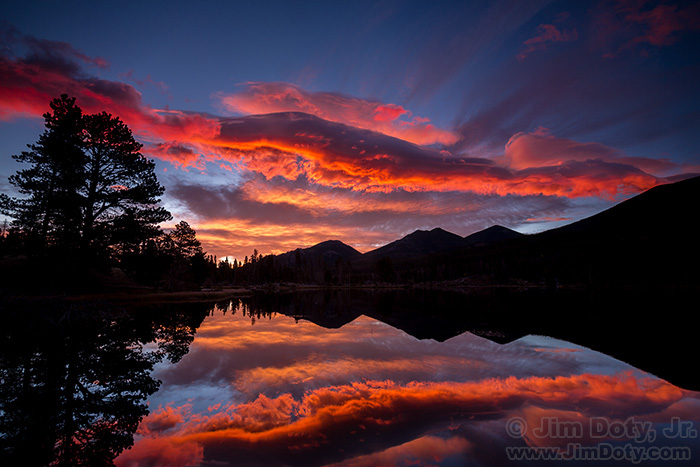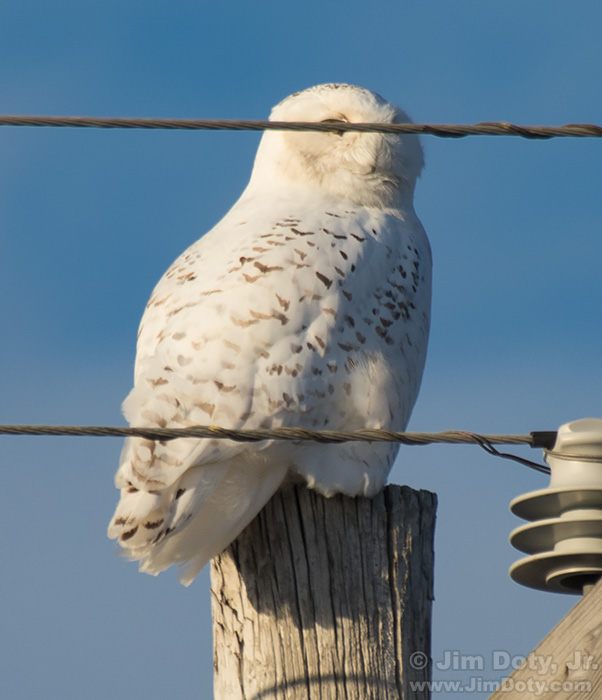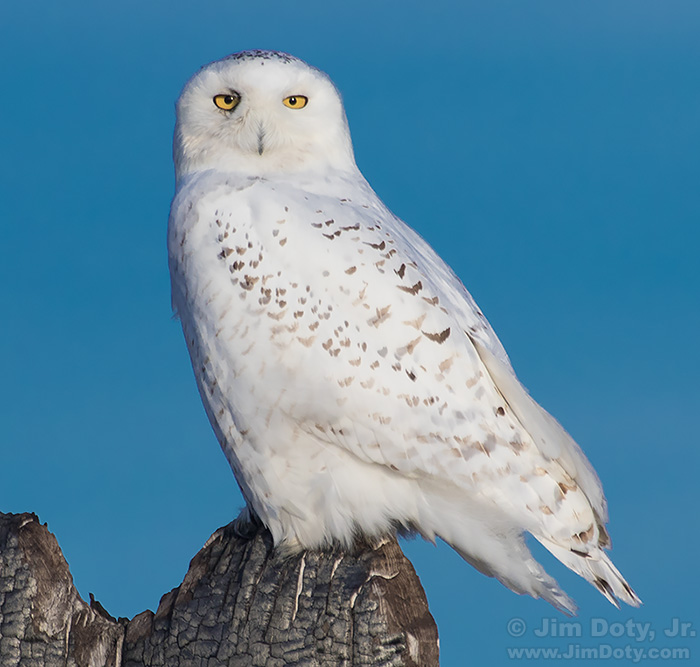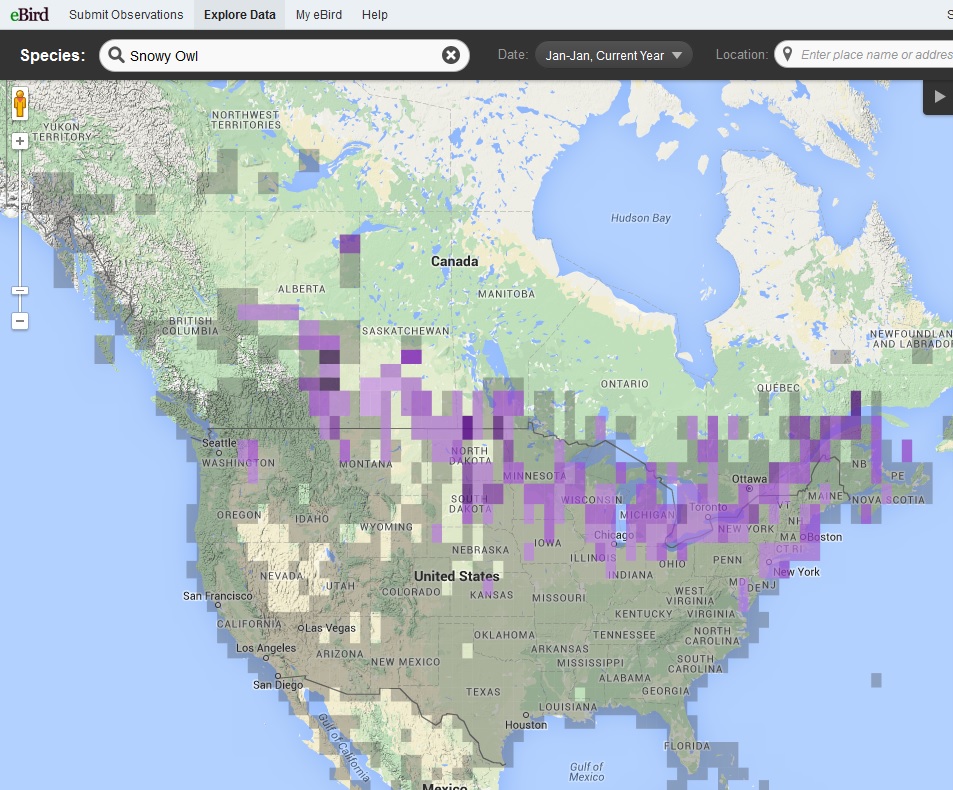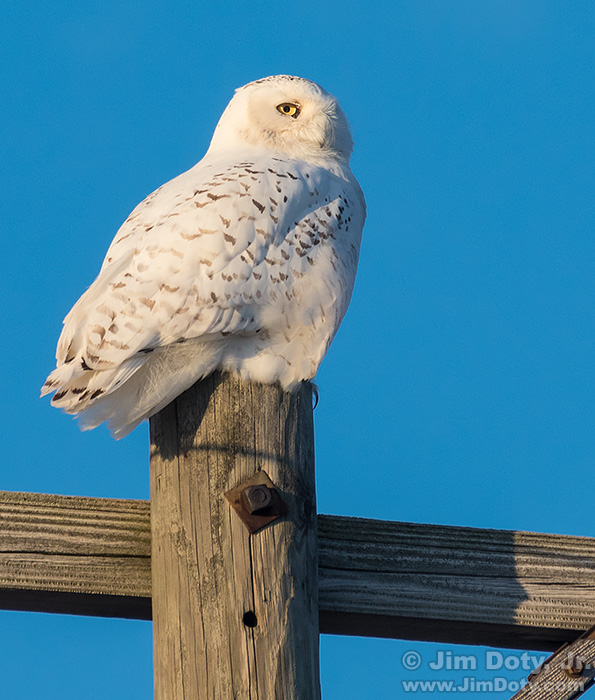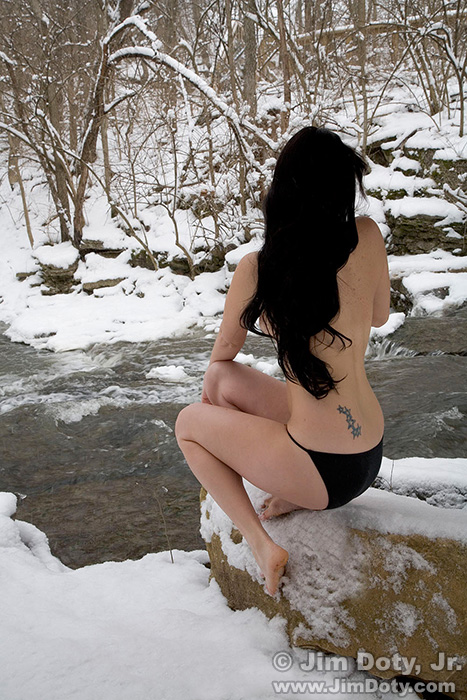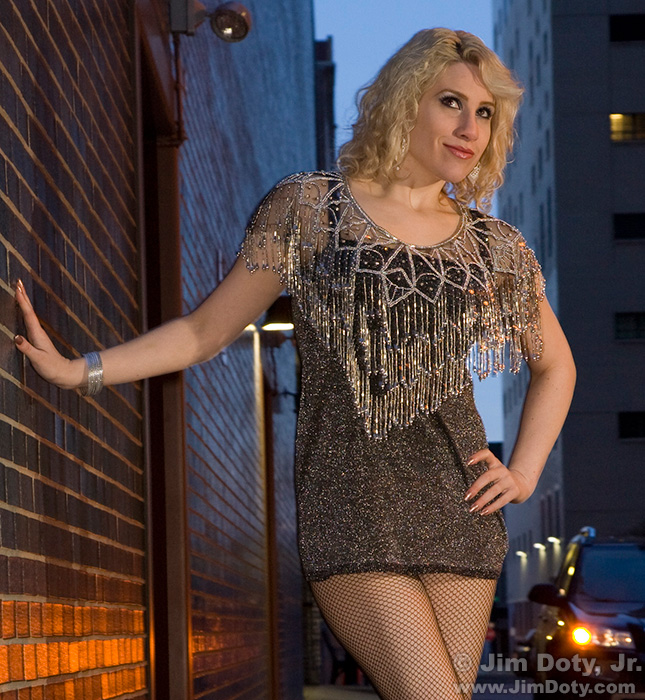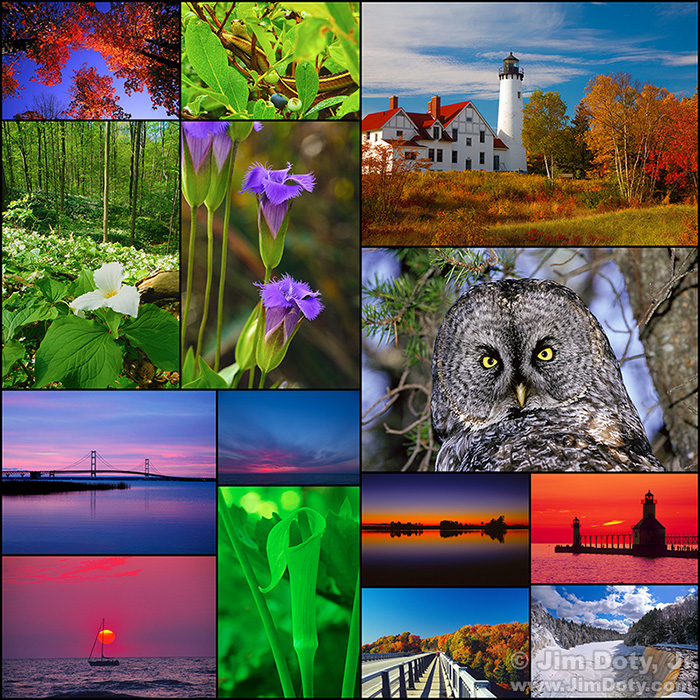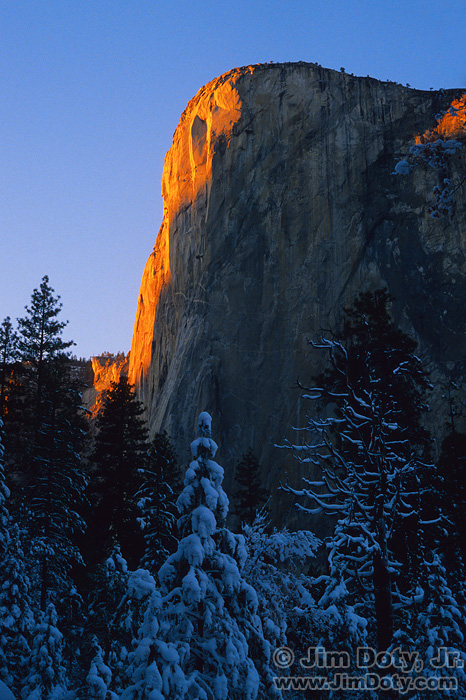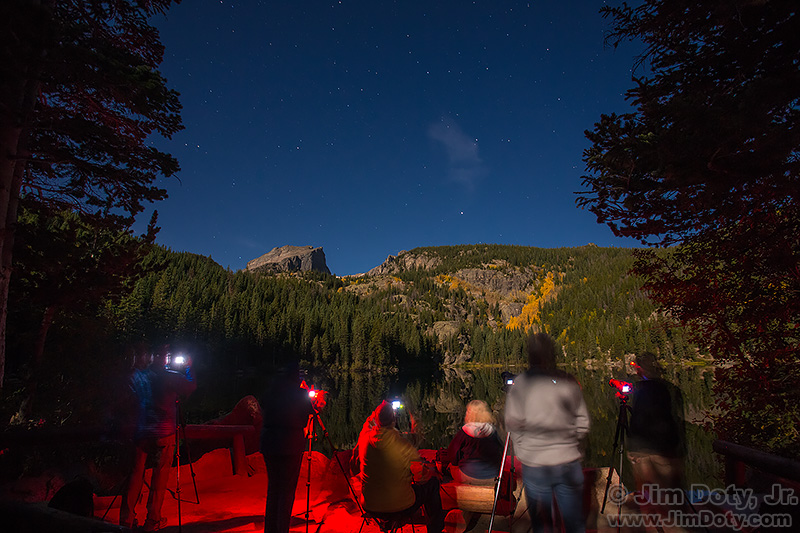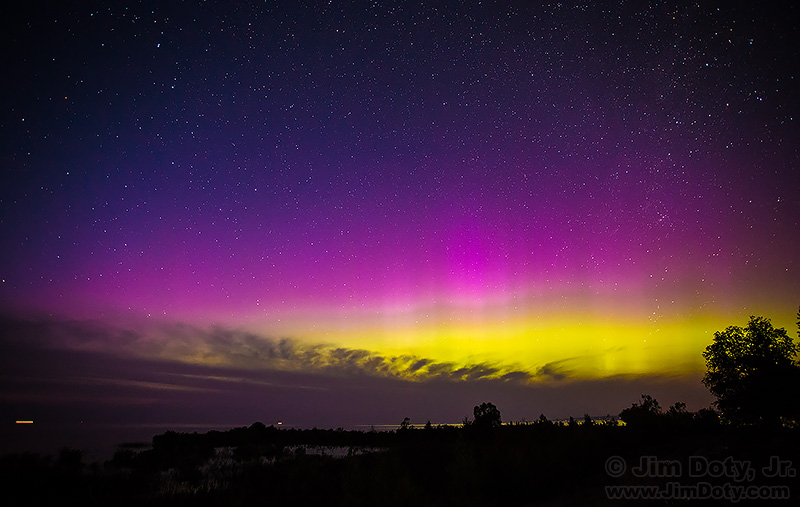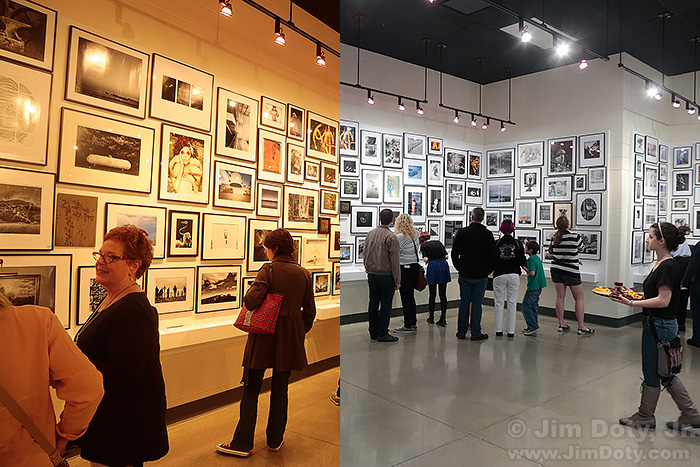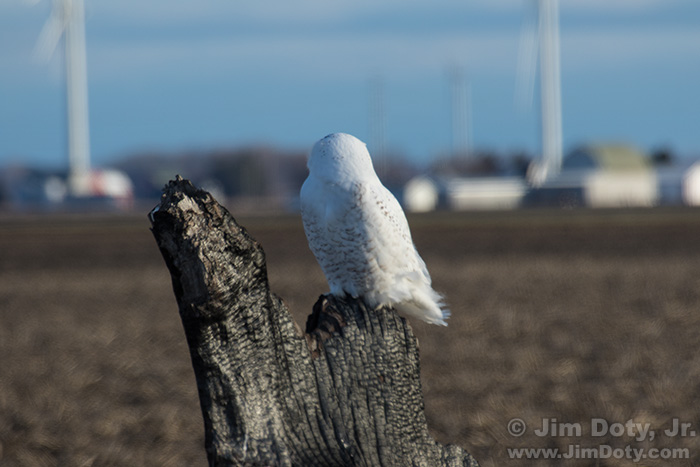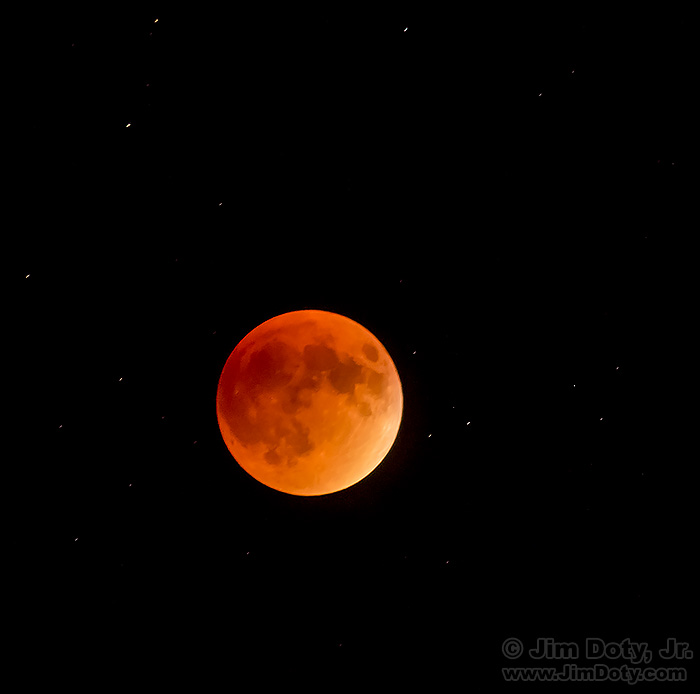The exposure compensation scale on your camera is one of the keys to mastering exposures, getting better images, and ending up with professional quality colors. This means taking your camera off of full auto mode and taking control of your own exposures.
Category Archives: Using Equipment
POTD: Violinist in the Snow
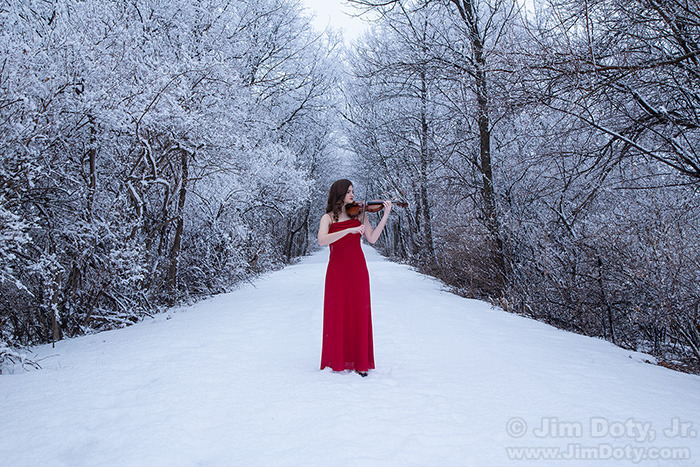
A couple of weeks ago, Beth and I went out into the cold and snow to create images. She played her violin while I took pictures. For that shoot she wore her long black concert dress. Since then, much of the snow has melted in southern Iowa. If another day came along with the right conditions we wanted to shoot again.
How to Photograph a Musician in the Cold and Snow
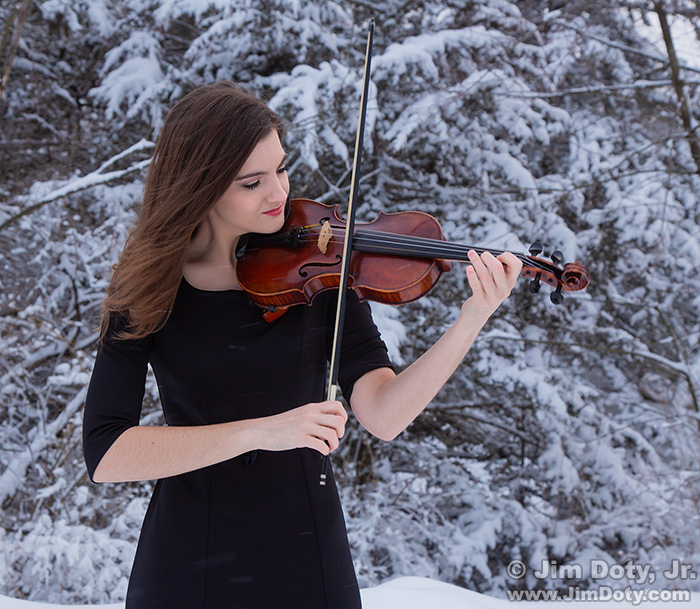
It was my happy privilege to do winter portraits of Beth Presler who is a superb violinist. This article has suggestions for photographing any musician on a cold, snowy winter day.
Snowy Owl Photography: Solving A Photo Problem (And the Right Way to Exit Your Vehicle)
When I am traveling with my highly trained and high paid photographic assistant it is his job to remove trash barrels when they are in the way, cut down trees that spoil my view, run out into the meadow and scare off the cow elk that are in front of the bull elk I want to photograph, rip boards off of old barns that don’t look quite distressed enough, pull on the whiskers of a sleeping cougar to wake it up, and cut down utility lines that are obstructing a clear view of my subject. But he wasn’t with me on this trip due to sitting in jail over a minor incident in Yosemite. So I had a challenge on my hands that I had to solve myself.
I am kidding, of course. The prior paragraph was inspired by really crazy things a few photographers do but shouldn’t be doing.
A Snowy Owl Photo Expedition
What is a Snowy Owl expedition really like? This article is your chance to find out. Join me for a two day photo safari! I give you tips and photo suggestions along the way, and you get to see how I prepare, plan, and adapt on a photo trip. I tell you what went right and what went wrong so this is also about what to do when things don’t go according to plan.
How to Find and Photograph Snowy Owls
Winter is your opportunity to photograph Snowy Owls. When it is cold enough and there is enough snow cover, snowy owls move down into the northern U.S. The colder it is the farther south they move. If conditions are right, don’t delay. If the winter turns warmer the snowy owls will head back north.
How To Series: Snowy Owl Photography
If there are cold enough temperatures and plenty of snow cover on the ground, the northern United States has a winter invasion of Snowy Owls. These are magnificent creatures and well worth your photographic time and attention. This series is filled with tips on how to find and photograph snowy owls.
How to Photograph a Nude Model in the Cold and Snow
It is difficult enough to create a beautiful nude image under normal circumstances, much less in the cold and snow. You need to bring some significant skills and experience to the task. So does your model.
How To Work With A Model When The Windchill is 4°
You would think a windchill of 4° Fahrenheit (-16°C) would be too cold for a photo shoot, but not with some models. We booked this January shoot weeks in advance so we knew it would be cold, but we had no idea how cold until the day arrived. Here’s the story behind this image and how to work with a model when it is so cold.
Short-Eared Owl
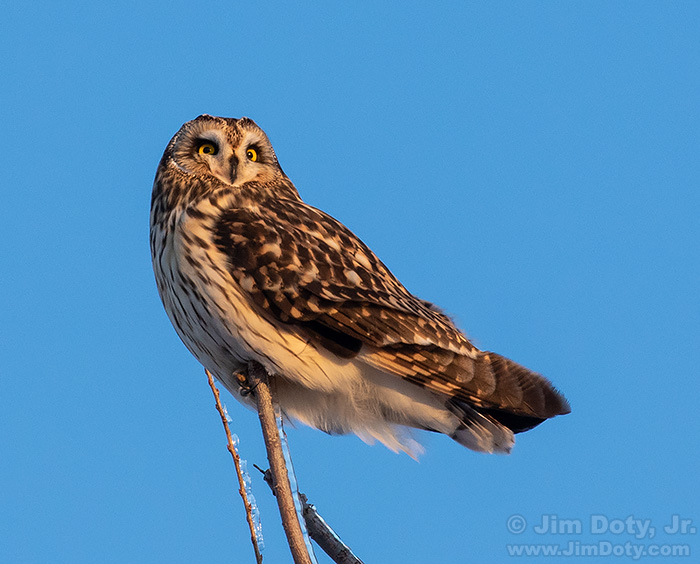
With a nice coating of ice on trees and bushes, my plan was to go out in the country and photograph late afternoon sunlight glinting off the ice. Instead, I ended up with this image of a Short-eared Owl.
Total Immersion Nature Photography Weekend in Beautiful Northern Michigan
Are you ready to take your nature and wildlife photography to the next level? Are you ready to learn the professional secrets that make the difference between good images and great images? Are you ready for a high intensity, action packed, total immersion photography weekend? Come to Park of the Pines on beautiful Lake Charlevoix June 12-15, 2020.
“How To†Series: Winter Photography
In addition to all of the usual photographic challenges, winter provides some extra complications, especially in terms of metering. So I began this series of articles on winter photography. Check out the links below. The articles will help you meet the unique challenges of winter photography. So get out there, have fun, and create some great winter images!
How to Safely Watch and Photograph Mercury’s Transit of the Sun, Monday November 11
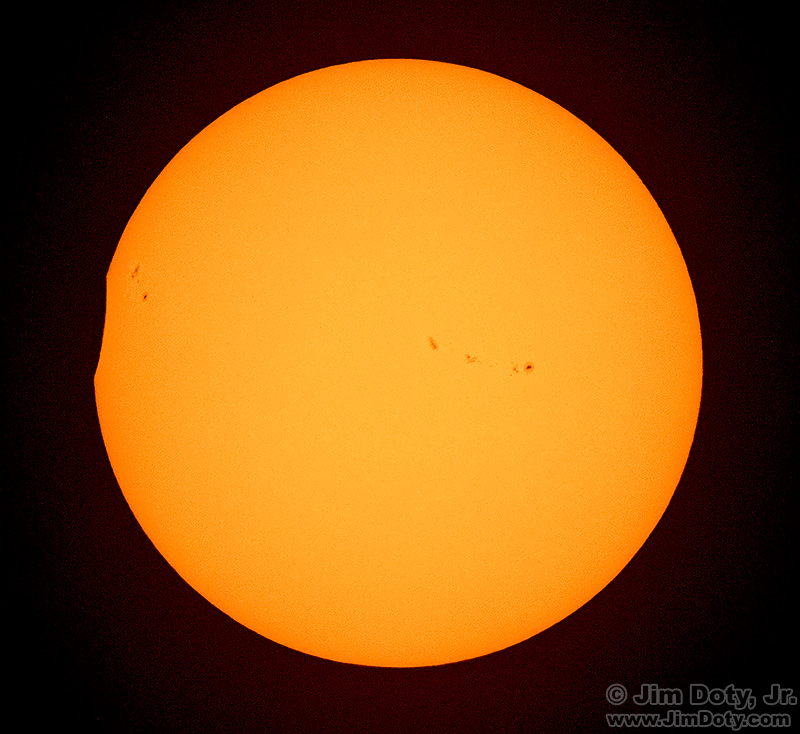
Mercury will transit the sun, Monday, November 11, 2019 from 7:35 am EST (1235 GMT) to 1:04 pm EST (1804 GMT). Don’t miss it! There will not be another transit for 13 years. If you have solar eclipse glasses or solar safe binoculars from 2017’s solar eclipse, you have everything you need to watch the transit.
Today is the Day! 10-14 Foot Waves Hitting a Lighthouse Will Make for a Great Photo Op in Michigan!
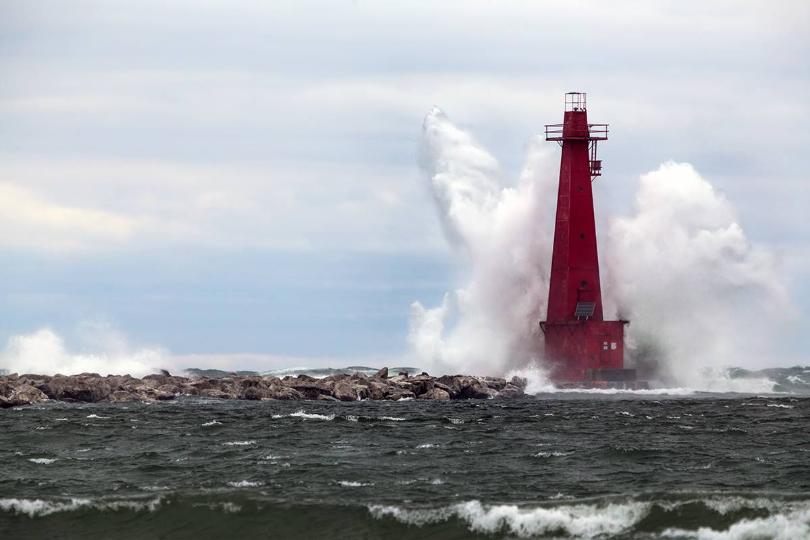
First of all, 10-14 foot waves lashed by 50 mph winds are dangerous. Do not go out on piers! Stay well back from the shore! Second, this is a great opportunity for some impressive waves against lighthouse photography and today is the day.
How To Get Critical Focus in “Live View” Mode with a Magnified Image
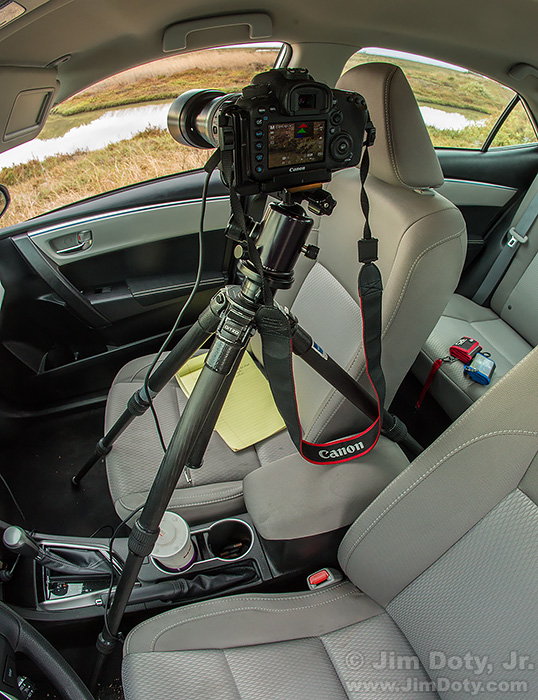
Tripod mounted camera in live view mode. The image is visible on the LCD along with the RGB histogram.
“Live View” mode is a huge boon to digital photographers and magnified focus is one of the reasons why. Focusing this way is more accurate than the camera’s autofocus modes, at least with non-moving subjects, and you will have sharper images. Landscape photography is the usual time to use this technique but sometimes it works for wildlife.
How To Focus Your Lens at Infinity for Night Photography
The most important and difficult step in night photography is to focus your lens at infinity. If you have tried to focus on the stars at night you have already learned that it is an impossible task for the autofocus system and just about impossible for you to do manually. You just can’t see clearly enough through the viewfinder in the dark of night to manually focus on the stars. Fortunately, there are some ways to get the job done.
Originally posted Jan. 8, 2017. Revised and re-posted Sep. 5, 2019.
How to Photograph the Northern Lights
As we head into fall the Northern Lights activity will pick up. The best time to view Northern Lights is from September to late March (although things may start up in August and extend into April). This article will tell you how to capture the Northern Lights with your camera. The Northern Lights come and go in an erratic fashion so this article will also show you how to know which nights are likely to be the best to go out and look.
How to See and Photograph the Perseid Meteor Shower
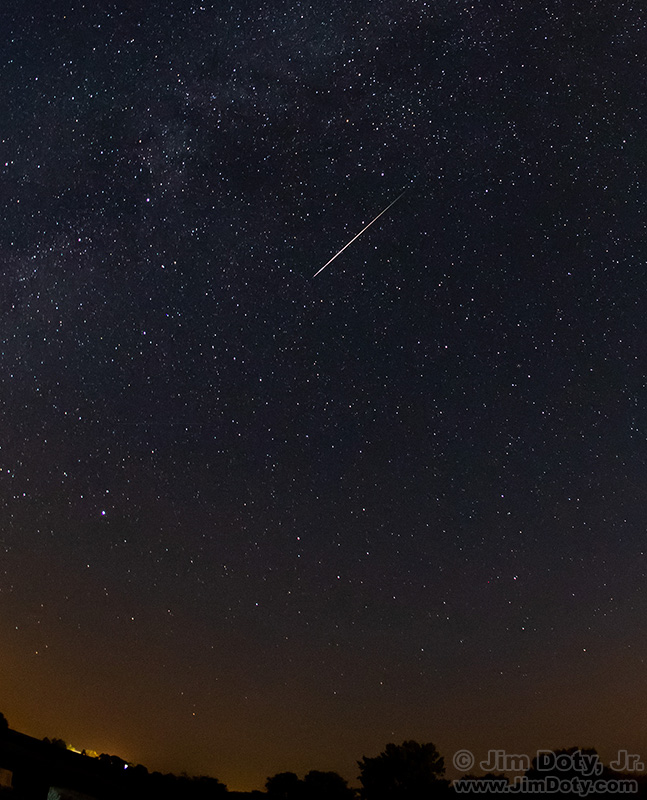
Perseid Meteor photographed from Rose Hill Cemetery west of Lamoni, Iowa. 4:55 am CDT, August 13, 2018. Cropped from the original image.
The night of August 12-13 is the predicted peak night of the Peresid Meteor Shower. But you can look for the next few nights after the peak night. This article will tell you what you need to know to see and photograph the most popular meteor shower of the year.
Total Immersion Nature Photography Weekend in Beautiful Northern Michigan
Are you ready to take your nature and wildlife photography to the next level? Are you ready to learn the professional secrets that make the difference between good images and great images? Are you ready for a high intensity, action packed, total immersion photography weekend? Come to Park of the Pines on beautiful Lake Charlevoix June 7-10, 2019.
Favorite Photo, March 10
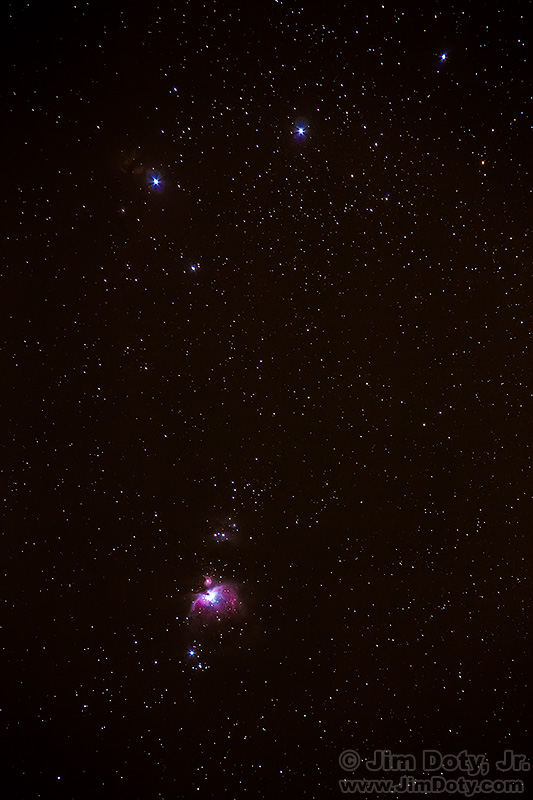
I had recently acquired an iOptron SkyTracker but cloudy night skies in Columbus Ohio had prevented me from trying it out. My first clear night came during a visit to Lamoni Iowa, a location that is also blessed with dark skies far from big city lights.
Why and When To Set A Custom White Balance
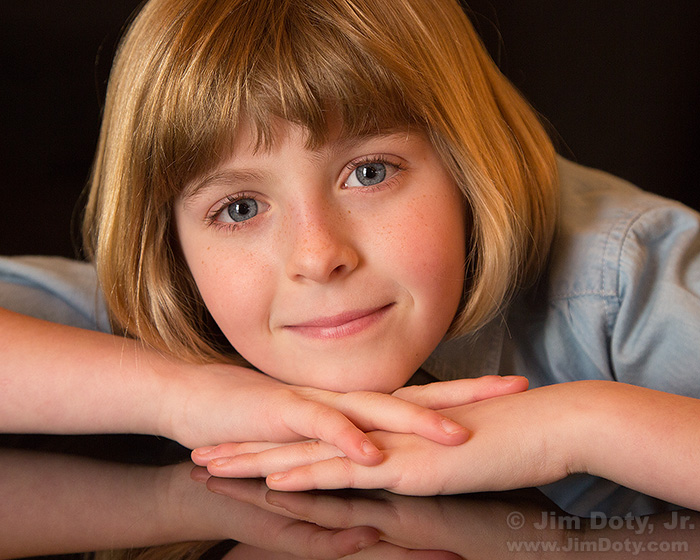
Why set a custom white balance? The answer is simple. To get the best, most accurate colors your camera is capable of producing. It is especially important when photographing people if you want beautiful, accurate skin tones. In this article I give you some shooting tips, answer common questions, and I cover the situations when it is preferable not do a custom white balance.
How To Set A Custom White Balance on Your Digital Camera
Â
To get the most accurate colors your camera is capable of creating you need to set a custom white balance. Every camera does this a little differently, but it involves taking a picture of an 18% gray card (or something pure white) and using that photo as a standard to create a custom white balance setting. I will show you the process with a Canon camera, but other brands should be somewhat similar. Check your camera’s manual for specific instructions.
Snowy Owl Photography: Solving A Photo Problem (And the Right Way to Exit Your Vehicle)
When I am traveling with my highly trained and high paid photographic assistant it is his job to remove trash barrels when they are in the way, cut down trees that spoil my view, run out into the meadow and scare off the cow elk that are in front of the bull elk I want to photograph, rip boards off of old barns that don’t look quite distressed enough, pull on the whiskers of a sleeping cougar to wake it up, and cut down utility lines that are obstructing a clear view of my subject. But he wasn’t with me on this trip due to sitting in jail over a minor incident in Yosemite. So I had a challenge on my hands that I had to solve myself.
I am kidding, of course. The prior paragraph was inspired by really crazy things a few photographers do but shouldn’t be doing.
Snowy Owl Photography: Control the Background for Better Images
A simple change of background can turn a disappointing wildlife photo into a great one. Professional wildlife photographers think about backgrounds all the time and do everything they can to improve the background. Less experienced wildlife photographers are so excited to find an interesting creature that they give the background precious little thought.
A Snowy Owl Photo Expedition
What is a Snowy Owl expedition really like? This article is your chance to find out. Join me for a two day photo safari! I give you tips and photo suggestions along the way, and you get to see how I prepare, plan, and adapt on a photo trip. I tell you what went right and what went wrong so this is also about what to do when things don’t go according to plan.
How to Find and Photograph Snowy Owls
Winter is your opportunity to photograph Snowy Owls. When it is cold enough and there is enough snow cover, snowy owls move down into the northern U.S. The colder it is the farther south they move. If conditions are right, don’t delay. If the winter turns warmer the snowy owls will head back north.
“How To†Series: Snowy Owl Photography
If there are cold enough temperatures and plenty of snow cover on the ground, the northern United States has a winter invasion of Snowy Owls. These are magnificent creatures and well worth your photographic time and attention. This series is filled with tips on how to find and photograph snowy owls.
Favorite Photo, January 29
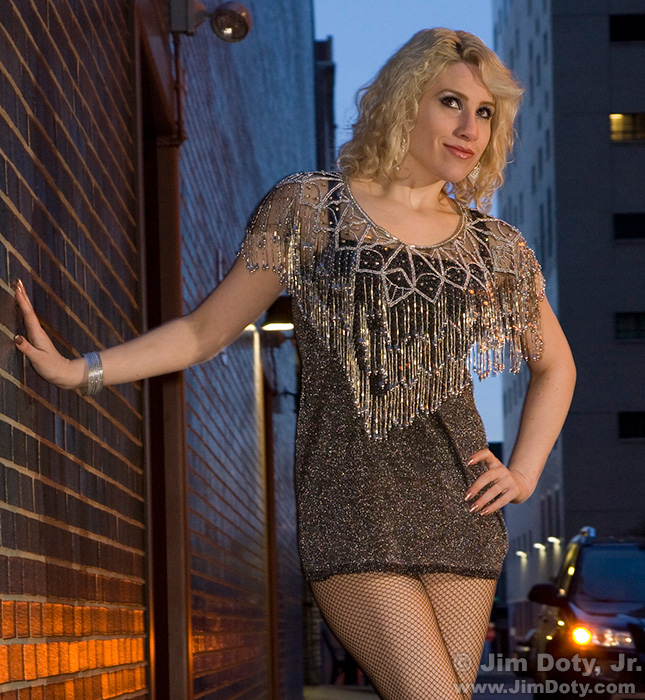
When Selina and I scheduled this shoot, we knew it would be chilly in late January, but we had no idea when they day arrived that it would be bone chillingly cold. But we decided to go ahead anyway. So she made the trip from Kentucky to Columbus Ohio for our photo shoot.
How To Photograph the Super Blood Wolf Moon Eclipse, January 20-21, 2019
Here in North America, Sunday night and early Monday, January 20-21, you have your last chance to photograph the last total lunar eclipse until 2021. This article will show you how. Continue reading
How to Photograph a Nude Model in the Cold and Snow
It is difficult enough to create a beautiful nude image under normal circumstances, much less in the cold and snow. You need to bring some significant skills and experience to the task. So does your model.

